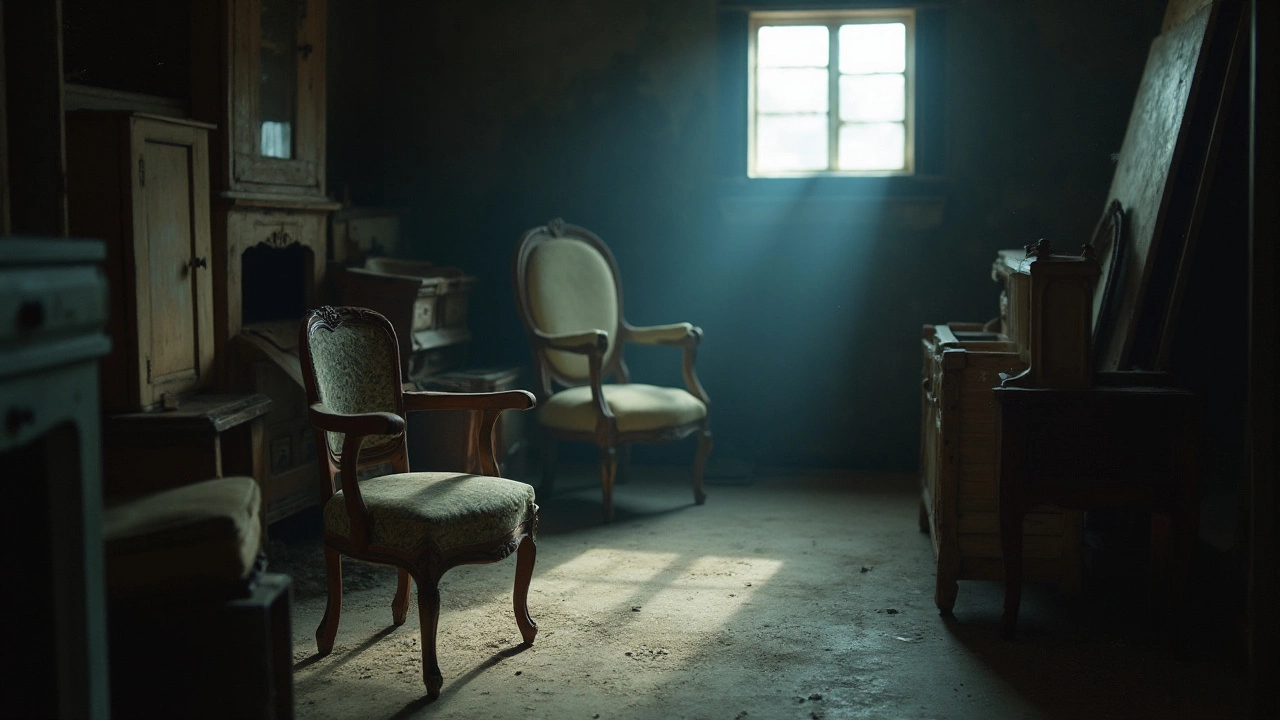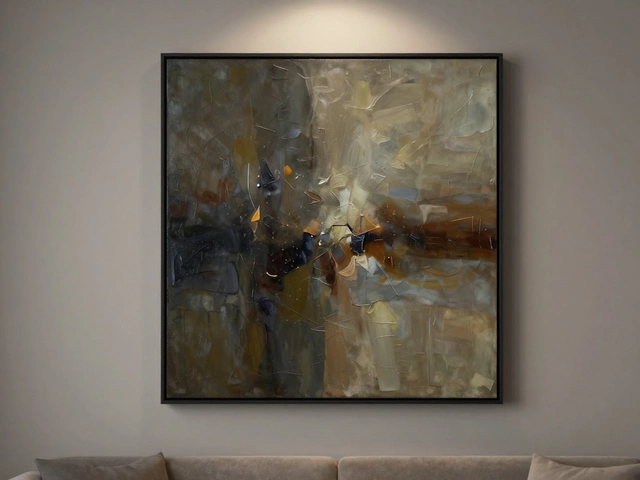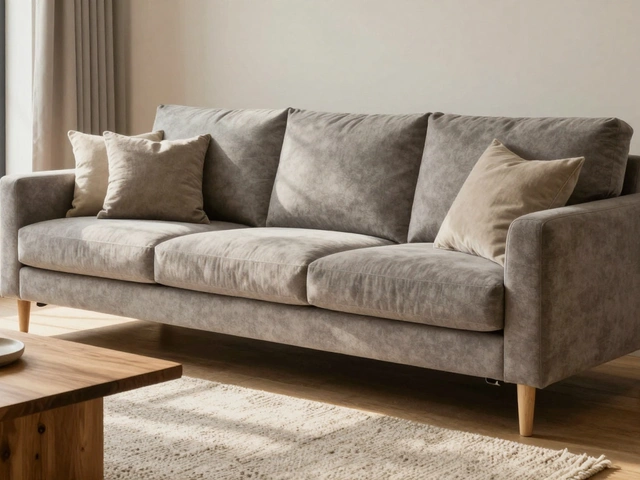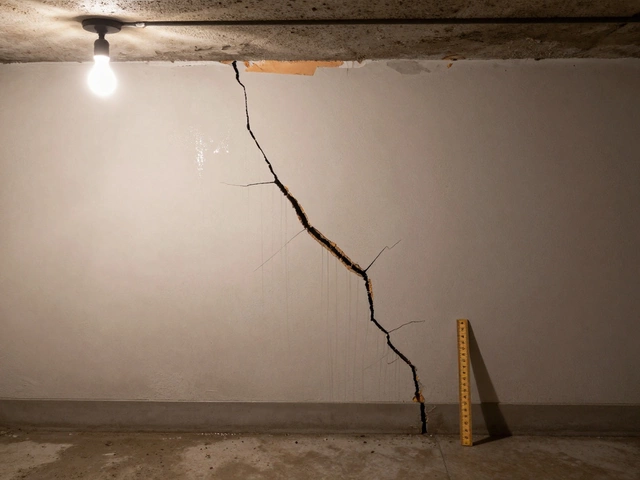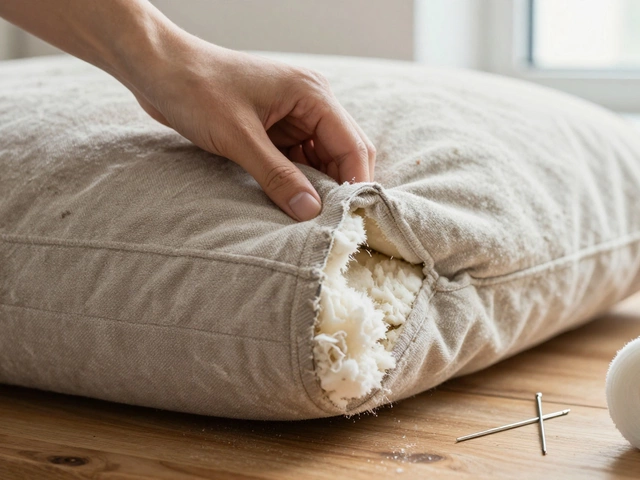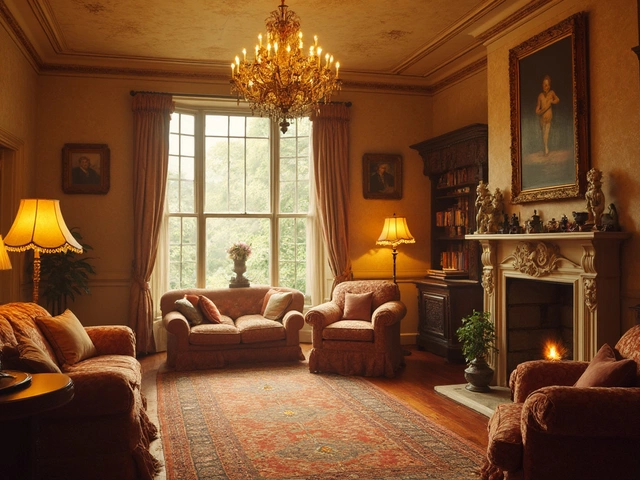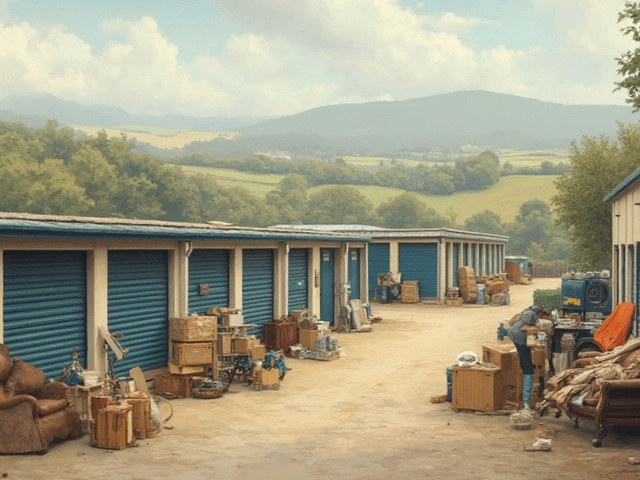The concept of storing furniture might initially seem as simple as packing away a box of seasonal clothing, but it's a bit more complex than that. Furniture, made up of diverse materials such as wood, fabric, and metal, each deteriorate in various ways when left unattended in storage.
Factors like temperature, humidity, and pest control significantly affect how well a piece of furniture ages, turning what is meant to be temporary storage into a race against time. If you're considering tucking away your vintage sofa or inherited dining table for safekeeping, understanding these dynamics isn't just useful—it's essential.
This article delves into the nuances of keeping furniture in storages, such as recognizing early signs of damage and employing effective preventive measures. With the right knowledge and a little extra care, you can preserve the quality and beauty of your furniture treasures, ensuring they stand the test of time while in storage.
- Understanding Furniture Material Degradation
- Climate and Environmental Factors
- Signs That Your Furniture is Suffering
- Preventing Damage: Effective Storage Solutions
- Preparing Furniture for Long-Term Storage
- Choosing the Right Storage Facility
Understanding Furniture Material Degradation
Have you ever considered what happens to your beloved armchair or dining table when it's in furniture storage? Different materials degrade in their unique ways, sometimes visibly changing shape or appearance. This phenomenon, often subtle at the start, can become alarming if not addressed. Wood, for instance, is a darling material in furniture design — its elegance and durability unmatched. However, wood is hygroscopic, which means it absorbs or releases moisture based on the surrounding environment, impacting its structural integrity. If your storage space isn't climate-controlled, fluctuations in humidity can cause wood to warp and crack, diminishing its original charm.
Fabric used on upholstered furniture offers different challenges. Fabric fibers can weaken from constant temperature changes and exposure to light, causing colors to fade and textures to weaken. Did you know that exposure to high humidity can lead fabrics to develop mold and mildew, which are incredibly challenging to eradicate once they set in? While some synthetic fabrics boast more weather-resistant properties, they are not immune to the wear and tear of time.
Let's not forget about metal components, often found in modern furniture like bed frames or metal-legged tables. Metals, particularly iron and steel, are prone to rust in damp conditions. Storage units without proper ventilation can lead to oxidization, where your furniture gets that telltale brownish-red coat of rust, which not only diminishes its aesthetics but can also structurally weaken the material. A case study published by The Furniture Society highlighted that 'over 40% of storage complaints are related to improper handling of metals', a statistic worth considering when planning long-term storage solutions.
"The silent decay of furniture materials is often unnoticed until significant damage occurs, making routine checks crucial. Ignorance in storage equals loss of heirloom potential.” – Michael Alan, Restoration Specialist
Moreover, glass, a common addition to many contemporary pieces, might shatter or develop hard-to-clean mineral deposits if not stored correctly. The glass might expand under heat stress, potentially compromising its fit within the frame. Understanding these material-specific vulnerabilities is essential to curating a storage environment that safeguards your investment effectively over time.
Protective Strategies
- For wood furnishings, consider wax or polish to create a barrier against moisture.
- Use breathable covers for fabric-covered pieces to minimize dust accumulation and moisture retention.
- Ensure metal furniture is dry and perhaps gently coated in a rust-preventative oil before storing.
The awareness of these degradation dynamics not only helps in choosing the right type of storage but also arms you with strategies to protect your furniture. So next time you plan to store a piece away, remember: each material ages differently, and understanding these nuances can save you from future headaches.
Climate and Environmental Factors
One of the most critical elements affecting furniture storage is the climate where your items are kept. You'll find that temperature fluctuations can wreak havoc, especially on wood and fabric-based items. Wood, for instance, naturally expands and contracts in response to the shift in humidity and temperature levels, which may lead to joints becoming loose or warped surfaces. Fabric, on the other hand, can become a breeding ground for mold and mildew if left in damp conditions for too long. This creeping invasion not only affects the structure but leaves an unsightly stain and a lingering odor that can be a nightmare to remove.
There's also the importance of light exposure. Prolonged exposure to direct sunlight can lead to fading and weakening of fabrics and dyes, significantly reducing the visual appeal and durability of your furniture. A seemingly harmless ray of sun peeking through a window can bleach out the colors, stripping woods and fabrics of their rich hues, and leaving pieces looking tired and aged long before their time.
The way furniture responds to its environment is similar to how skin reacts to sun and air—both need protection to stay healthy," remarked John Fitzpatrick, a bespoke furniture upholsterer with three decades of experience.
Humidity controls are essential for storage spaces. High humidity levels can cause wood to swell and may lead to rotting if left unchecked, while extremely dry conditions can cause it to crack or split. Ideally, maintaining a consistent, moderate humidity level is where you'll find the sweet spot. Modern storage facilities often offer climate-controlled units specifically designed to counteract these issues, ensuring the protection of treasured items from this environmental rollercoaster.
Environmental factors don't just stop at temperature and humidity. Air quality is another significant influencer, as pollutants and dust accumulation can lead to furniture degradation. Dust settles into the nooks and crannies of furniture, becoming abrasive over time. This often unseen enemy can scratch polished surfaces and dull metal finishes, decreasing the piece's lifespan. Mitigating these risks involves using dust covers or selecting a storage unit with excellent air filtration systems.
Research has even shown that pests are drawn to particular environmental cues. Woodworms, termites, and rodents tend to infest areas where they find optimal hiding conditions—dark, moist, and undisturbed. Furniture provides these pests with the perfect playground and buffet if left unchecked. Regular inspections and adept sealing of furniture can prevent unwelcome guests from setting up home in your antiques.
Let’s not forget about seasonal changes. Summer heat waves can escalate internal temperatures to stifling levels, while winter can bring frost into poorly insulated storage spaces. Both extremes are detrimental, hence climate-controlled options are invaluable. They might appear as an extra expense initially, but the preservation of your cherished pieces makes it a worthy investment. Consider all these factors, weigh their impact, and adjust your storage plans accordingly to guarantee the longevity of your furniture.
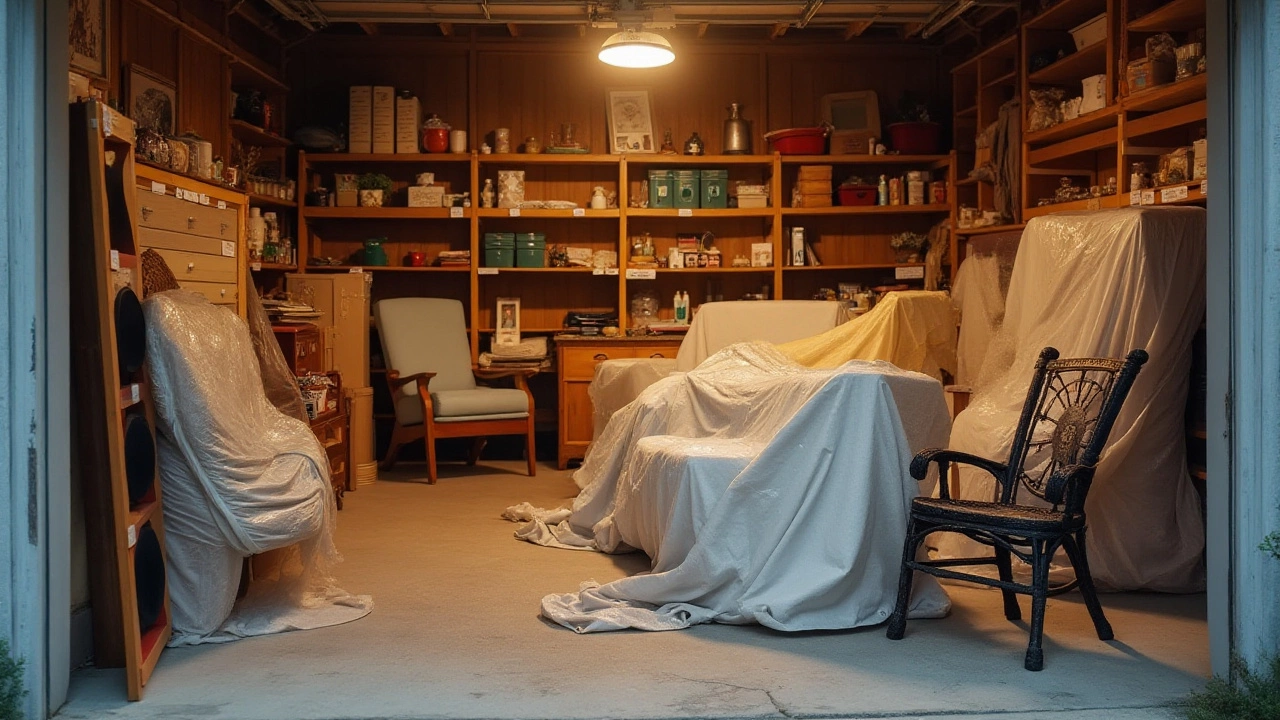
Signs That Your Furniture is Suffering
Recognizing when your beloved furnishings are beginning to suffer in storage can save you time and money in restoration costs. One of the first telltale signs of trouble is the presence of musty odors, which can indicate the growth of mold or mildew—a direct result of trapped moisture. This is more common with fabric and wood furniture, as they have the unfortunate tendency to absorb humidity. Once moisture seeps in, it acts as a breeding ground for mold spores, leading to that unwelcome musty smell. Over time, this can also cause discoloration in woods, warping, and even weaken the structural integrity of the pieces.
Beyond odors, visual changes provide a clear indication that your items might not be faring well. Look for discoloration or fading in fabrics, which suggests prolonged exposure to light or moisture. Similarly, wood can suffer from swelling, cracking, or even a noticeable change in color. Warping wood is another red flag, often caused by fluctuating humidity levels within the storage space. Metal elements aren’t exempt either; rust and corrosion can quickly settle in on metal frames and fixtures, betraying that they’ve come into contact with damp conditions or aren’t properly insulated against moisture.
The tactile sensation is just as crucial to assess. Fabrics that suddenly feel different, either becoming more brittle or excessively soft and mushy, may be undergoing chemical changes due to mold or excessive dampness. In wooden furniture, protruding nails or joints that feel loose could signal that the material has expanded and contracted multiple times. Furniture preservation must consider these tactile cues to prevent structural damage from advancing further.
One aspect often underestimated is the effect of pest activities, a subtle yet potent enemy of furniture storage. Tiny holes could indicate insect burrows, while frayed edges or gnawed wood can reveal rodent activity. This physical damage can rapidly progress if not regularly inspected and controlled. Such infestations are not only a nuisance but can also pose health risks, emphasizing the need for vigilance.
"The health of furniture storage depends on both its internal surroundings and external environment," notes Emily Parsons from Home Storage Magazine. "Recognizing and remedying problems early can save collections from irreversible damage."
As you conduct these inspections, maintain a routine schedule. Attention to detail and a keen eye are your best defense against the ravages of time. Regularly check for furniture lifespan degradation to ensure your pieces remain as vibrant and robust as the day they were stored. Should any issues arise, tackling them early is key to preserving your furniture's natural beauty and functionality for years to come.
Preventing Damage: Effective Storage Solutions
When placing your cherished furniture pieces into storage, the aim is always to retrieve them looking as pristine as the day they went in. Achieving this goal requires strategic planning and execution. The first step is understanding the nature and needs of each item based on its material, be it wood, metal, or upholstery. Each material has its own set of vulnerabilities which could lead to damage if not addressed properly. For example, wooden furniture requires careful attention to moisture levels since excess humidity can lead to warping or mold development. Meanwhile, upholstered items might need protection from dust and pests which can deteriorate fabric over time. Addressing these needs begins with proper cleaning of each piece prior to storage, ensuring all surfaces are free from dirt, oils, and residues that could lead to long-term discoloration or material problems.
Another crucial step involves choosing the right packaging materials and techniques tailored to each type of furniture. Items made from metal should ideally be coated with a light layer of machine oil or wax, which can help to fend off rust. Upholstered furniture, on the other hand, benefits from breathable covers that allow air flow while protecting against dust. Wooden pieces are often best secured with furniture blankets or bubble wrap, which can provide multiple layers of protection from dings or scratches while allowing the wood to 'breathe' properly. This strategic wrapping prevents the trapping of moisture against the wood, which is a known cause of many ills, including mold and mildew.
It is also vital to select the right storage environment, with climate-controlled facilities offering the best conditions to prevent premature aging of your stored items. These facilities are designed to maintain consistent temperature and humidity levels, a factor which is especially critical when storing wood and leather furniture. The investment in a climate-controlled unit is often worth it for long-term storage, where the impact of fluctuating environmental conditions can be most pronounced. Some experts argue that the cost of a few extra dollars for climate-controlled storage can save hundreds in repair and restoration costs later.
"The significant step of ensuring climate and environmental consistency in storage is often overlooked in the rush of packing," notes Sarah Jenkins, a renowned conservationist at the International Furniture Conservancy. "Taking this measure into account is a practical decision that greatly prolongs the integrity of your furniture across time."
Finally, don't overlook the organization within the storage unit itself. Place heavier items at the bottom and lighter, more fragile pieces on top. Allow sufficient space between each item to facilitate air circulation and prevent accidental collisions. Moreover, the way you layout your furniture can also affect its condition. Smaller pieces like chairs or end tables can ideally be stacked or fitted together but must remain free from pressure points that can leave permanent marks or lead to imbalances. Always remain mindful of storing larger items like mattresses upright to save space and avoid deformities. This not only guards their quality but makes eventual retrieval easier.
By adopting these specialized storage solutions, you're doing more than protecting your possessions; you're ensuring their beauty and functionality for years to come. The key lies in a blend of proper preparation, strategic packing, and selecting an ideal environment. Remember that each small step contributes significantly to preserving the lifespan of your furniture while in storage. Through thoughtful implementation of these practices, the act of storing furniture becomes an exercise in care that bridges the time until each piece can be enjoyed once more.
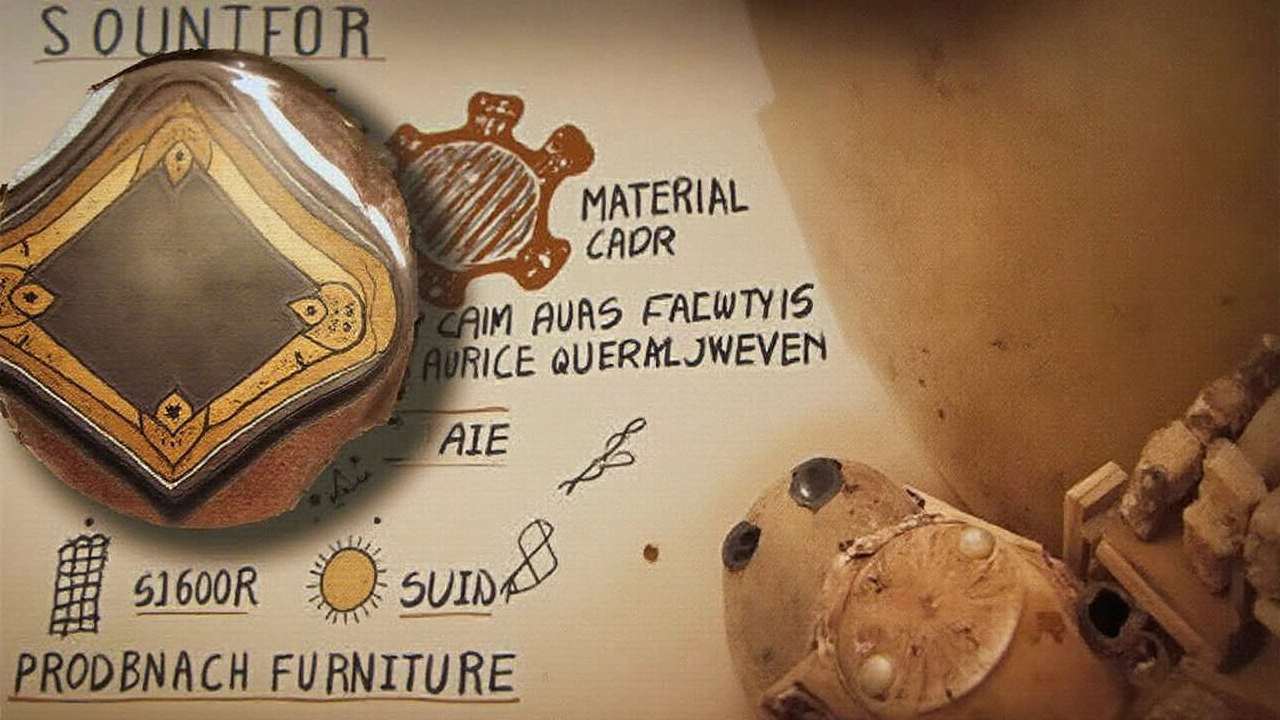
Preparing Furniture for Long-Term Storage
Preparing your furniture for long-term storage is akin to setting up a cozy winter hibernation for your cherished pieces. The process demands meticulous care to ensure that your furniture survives months or possibly years without suffering damage. A great starting point is cleaning each piece thoroughly. Dirt and grime can accelerate deterioration, especially when humidity levels shift. Use the appropriate cleaning agents for each material; for instance, a gentle polish for wood and specialized cleaners for metal and upholstery. This not only preserves the aesthetic of your furniture but creates a protective barrier during storage.
Once your furniture is sparkling clean, your next focus should be on dismantling where possible. Larger pieces, such as dining tables or bed frames, are cumbersome to store and can become a breeding ground for pests if not adequately taken apart. By dismantling, you also minimize the risk of bends or breaks due to prolonged pressure on joints. Carefully wrap each component in bubble wrap or high-quality moving blankets to cushion them against inevitable knocks and scrapes. Pay particular attention to corners and edges, as these are typically the most vulnerable parts during transportation and storage.
Investing in Protective Covers
Investing in protective covers is another critical step in extending the life of your furniture while in storage. These covers act as a robust defense against dust, moisture, and pests. Plastic covers might seem an obvious choice, but they can trap moisture against the furniture, leading to mold. Opt for breathable fabric covers or old bedsheets instead. These allow air circulation while still protecting your pieces from dust and light scratches.Consider Climate-Controlled Storage
Another factor not to be overlooked is the climate of your storage space. Extreme temperature and humidity fluctuations can wreak havoc on wood and upholstered pieces. Ideal storage units offer climate control, maintaining consistent temperature and humidity levels. As noted by the American Moving & Storage Association, “Climate-controlled storage units can prevent moisture-related damage such as warping, cracking, and mildew growth.” This minor investment in climate control can be a game-changer in preserving the longevity of your furniture."An ounce of prevention is worth a pound of cure," said by the venerable Benjamin Franklin holds especially true when addressing storage preparations. By spending a little extra effort on preparation, you save significant time, stress, and money in potential repairs or replacements.
Be aware that insurance might also play a crucial role in your storage strategy. Investigate the insurance options offered by the storage facility or consider additional cover to protect against unforeseen damages. While preparing your furniture for long-term storage might seem daunting, the satisfaction of knowing your treasured items are safe provides immense peace of mind. Paying heed to these detailed steps ensures that when it’s time to retrieve your items, they emerge just as pristine as they entered.
Choosing the Right Storage Facility
Picking the ideal storage facility for your beloved furniture isn't just about checking off a list of features. It is a meticulous process that demands attention to detail, especially when it comes to preserving the lifespan of your belongings. Environmental control is paramount; too much humidity can promote mold growth and warp wooden pieces. On the flip side, dry conditions can cause cracks in timber and upholstery to shrink. When evaluating a potential storage space, ask about their climate control capabilities. A facility that offers consistent temperature and humidity levels will be much more effective in safeguarding your furniture.
Beyond environmental controls, consider the security measures in place. A good storage facility does not only shelter your items from the elements—they should also protect them from theft and unauthorized access. Look for places equipped with surveillance cameras, secure locks, and appropriate lighting. The peace of mind knowing that your possessions are safe can't be overstated. Accessibility is another factor; if you anticipate needing to retrieve your items frequently, a facility offering 24-hour access might be worth the investment. But convenience should not outweigh security or environmental considerations.
As you search for the right facility, it's worthwhile to visit in person before making a decision. Observe the cleanliness of the entire facility. Dust and debris can easily infiltrate storage units and wreak havoc on sensitive furniture, particularly fabrics and finishes. Take note of how professionally the site is managed and see if it gives you confidence in entrusting them with your belongings. Remember, storing your furniture properly often means paying attention to even the smallest details you might overlook at first.
To get some expert advice, we spoke with Jane Doe from Storage Experts Inc, who noted, “The key to maintaining furniture during storage is not just the right environment but understanding the specific needs of the materials your furniture is made of.”
“Customers often underestimate the importance of investing in a high-quality storage unit,” Jane emphasized, highlighting the need for tailored storage solutions. “A simple choice at the outset can save you from unnecessary repairs or replacements in the long run.”
Using a checklist can guide you as you explore your options. Consider ratings and reviews from past customers too, as they often provide honest feedback about the facility's performance over time. It's a smart step to look for good reputations; oftentimes they signify not just satisfactory service, but an excellent track record in preserving items long-term. As you navigate this decision, remember that choosing the right facility today will pay dividends tomorrow in terms of preserving the beauty and functionality of your stored furniture.
